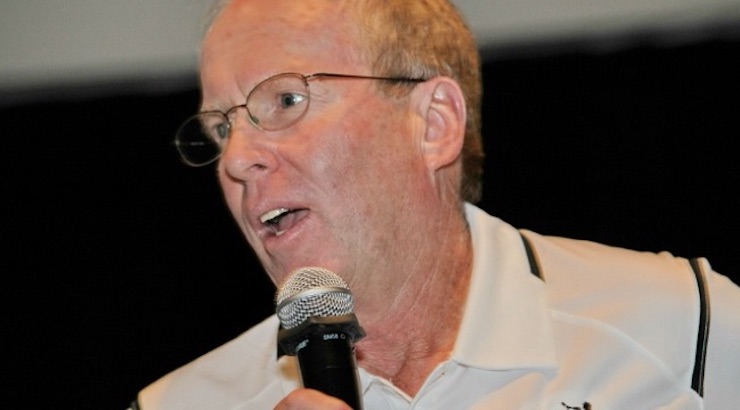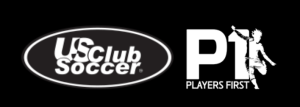US Club Soccer CEO Intent on Redefining the Role of Youth Soccer Through Players First
SoccerToday columnist Stanley Holmes, gives an overview of how US Club Soccer CEO Kevin Payne is changing the game by emphasizing the development of each individual player to his/her full potential, and helping families make better and more informed choices about where their children should play at the competitive level.
When former world-class, US National Team star Mia Hamm moved her family back to Chapel Hill, NC, she struggled to find a soccer club for her daughters. She told U.S. Soccer Federation officials how there was no process, no clear information, no accurate way to determine whether a soccer club was good or not. She asked friends for recommendations. If a former pro with such a legendary career on the soccer field needs help picking a soccer club for her kids, what do normal folks do?
Mia Hamm was exasperated.
“If Mia Hamm can’t figure it out in Chapel Hill, what chance does a normal parent have?” asked US Club Soccer CEO Kevin Payne, who heard Hamm’s story first-hand at that federation meeting.
Welcome to the new revolution. It won’t be the same as the old revolution.
Youth soccer is under going massive upheaval and the CEO for US Club Soccer is one of the prime disrupters.
He is not alone. The US Soccer Federation has issued its own set of small-sided and birth-year mandates.
Related Article: USSF Changes Youth Soccer
Many other experts have complained loudly for years about our youth-soccer dysfunction. Even US National Team Coach Jürgen Klinsmann is critical of our fractured youth system. He has put his imprints on some of the current federation reform mandates.
It seems no one disputes that we struggle as a nation to develop elite soccer players for the national team and for the pro ranks – let alone keep the rest of our youth players happy. By the time young soccer players turn 13, nearly 75% of them drop out of the sport, Payne says.
“We are eliminating close to three out of four of our potential elite athletes before we have any way of knowing if they are becoming elite athletes,” Payne says. “That’s not smart business.”
But no one, it seems, can agree on the solution or offer a clear path forward to fix the mess.
Enter Payne – a long-time soccer official. He has held senior management positions at the U.S. Soccer Federation, Major League Soccer and served as president and general manager of DC United.
As the new CEO of US Club Soccer, Payne has taken matters into his own hands. Under his direction, US Club has launched an ambitious national initiative aimed at redefining the youth soccer model – called Players First.
Related Article: US Club Soccer Kicks Off “Players First”
“My ambition is that Players First becomes the equivalent of the Good Housekeeping seal of approval,” Payne explained, in a recent interview. “It becomes a way for parents to have a clear idea how that club will provide youth soccer experience for their child.”
Payne understands the perils and challenges of getting the nation’s soccer community to embrace new thinking. He knows it’s going to be a long road to acceptance even among the 3,000 youth clubs that belong to US Club Soccer – let alone the entire soccer nation.
The vision starts by redefining the competitive role of the youth soccer club. For too many decades, the only measure of a soccer club was based on wins and losses. That has created a huge disconnect for parents and coaches alike. With lack of knowledge about the role of developing soccer skills at the crucial early ages before age 13, parents often look for wins as a key barometer when deciding to choose a club for their children. Clubs cater to this simple market demand, rightly fearing they will lose players if their teams fail to win.
To Payne, this model has been detrimental and must change if we want to produce top professional-caliber players and retain the majority of our amateur players. In short, changing the model is critical to the long-term viability of the sport, in Payne’s opinion.
“We want parents to understand that even if they happen to think their kid is an exceptional player, they still want to be in the right kind of environment,” Payne said. “Creating expectations of performance too early, putting too much pressure on kids too early, and cutting them from teams too early — all of those things are destructive.
“Parents don’t want a bad experience for their kids,” he continued. “But the best way today to measure a good program is based on wins and losses. That is creating an environment that is bad on so many levels. And it leads to this dramatic drop-off rate in participation, which is pretty shocking.”
In the beginning, everyone has good intentions. Parents want their kids to have fun, learn and reach their potential. And coaches want to share their passion for the game and teach players all the skills.
But somewhere very early in the journey, coaches and clubs begin to feel the pressure to produce winning teams – or else.
The clubs, Payne says, are caught somewhere in the middle. True, some club directors have exploited this fixation on winning for financial gain, but most others are responding to a market that places winning at the expense of crafting well-skilled soccer players.
“The result is that players get short changed in terms of development,” Payne explained. “We develop youth soccer teams but not youth soccer players.”
How to fix this is a sticky challenge, to be sure. That’s why solutions have been pretty much non-existent. You’ll hear competing claims from all corners touting their own pet prescriptions. But no one has come to agreement on a unified solution. And America may be too big for one solution. It’s too vast and diverse, the critics say, or the financial focus on pay-to-play forces clubs to give the consumers (parents) what they want – winning teams.

It’s true the role of youth soccer clubs is evolving from volunteer based organizations to professional or for-profit clubs. Money is now a big part of the equation for many youth soccer clubs. Players are revenue and revenue creates jobs and economic self-interest. There are roughly 4 million registered youth soccer players in the United States. Payne estimates the youth soccer business in this country at $3 to $4 billion annually. Youth soccer is a big business.
So, the question is how to get clubs to embrace new and different standards – ones that may challenge their current business model that says wins equals revenue. If wins no longer matter as much in the evaluation of a club, then what measurements do matter? What would be the yardsticks for evaluating the merits of a youth soccer club?
Payne wants Players First to be that standard for players, parents and coaches. Put simply, Players First is a philosophy to help make the youth soccer culture more nurturing and holistic in the way it measures and values each player’s experience, Payne says. The intention is to have a way for parents to properly identify and measure the appropriate environment for their children’s development.
To do that, Players First is diving deeply into the five areas that directly affect the youth soccer experience. US Club is coming up with new standards in each of these categories that go beyond the win-at-all-cost mentality. Payne calls them the five pillars:
- Club Development
- Coaching Development
- Player Development
- Parent Engagement & Education
- Player Health & Safety
Within each of these pillars, US Club is developing new principles that broaden and deepen a club’s role as the primary developer of young soccer talent. Eventually, clubs will have to meet these emerging standards in order to earn the Players First brand.
Raising the standards for youth soccer clubs makes sense on many levels – but particularly from a business perspective, Payne says. If youth soccer clubs are becoming more professional or moving to for-profit models, then clubs should be willing to raise and expand their standards. In Payne’s view, that’s good business.
“We want Players First to become competitive advantage in the market place,” Payne said. “It’s not naïve.”
What isn’t going to change is the pay-for-play model that drives most competitive soccer clubs – a uniquely American concept. Many critics here bash the model because it excludes players based on economics. It’s a valid criticism, but someone has to pay the bills.
In Europe, Payne says there are several hundred professional clubs underwriting the youth development process. Here in America, there are only 20 MLS clubs that can afford to do that and another 60 development academies trying to figure out how to fund it.
“Anybody who thinks the pay-for-play model is going away is hopelessly naïve,” Payne said. “That’s not going to change. Rather than try to convince people to ignore their own economic self-interest, why not try to encourage them to do things the right way by adopting the principles of Players First.
“What I’m hoping is that you won’t have to sacrifice anything to win games, you continue to attract kids to your program and you earn more money,” he continued. “My hope is to get parents convinced that their kids experience will be a better one – that we’re trying to help every kid be as good as they can be.”







